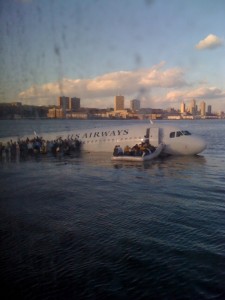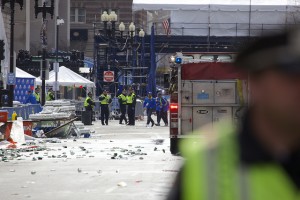Crisis Communication
There are very few Twitter accounts that I have set up for phone alerts. But the two accounts I always keep up with are the Nieman Lab and the Dart Center for Journalism and Trauma who are at the cutting edge of journalism and crisis communication.
Nieman’s research on how the Boston bombing broke, analysed the timeline of the tweets and the retweets and their findings back up my own thoughts and research on how an emergency situation breaks and spreads. With situations such as such as the Hudson River plane crash, the Paris bombings and the Clutha helicopter crash the story is broken by eye witnesses at the scene – unwitting citizen journalists.

“New York Plane Crash” by Ole E Eid is licensed under CC BY 2.0
What happens a crisis hits
Their initial tweets muster a few retweets within their own social networks.
The next phase is those tweets being picked up by the media which, with more followers gain more retweets. These accounts add more weight to the story as they are considered a trusted source. The story is broken by the public but is verified and amplified by the media.
However, often the facts can take hours to be corroborated by official sources, usually the police, but this can also be the fire service, the NHS or the council, and in other countries, the government. We first responders need to speed up our reactions when it comes to warning and informing during emergencies and harness the power and speed of social media.
Crisis communications and playing out situations
As well as desk research part of my job means taking part in exercises where we play out emergency situations. This has included severe snow, flooding, a gas explosion, pandemic flu, a nuclear leak, an outbreak of anthrax, a bus crash and a major fire with the evacuation of a hospital. Luckily these didn’t all happen at once and it does make living in Scotland seem more dangerous than it really is. But then the more we practise, the more confident we are in the plans and procedures we all have and social media has become an essential piece of kit both for communication and operations.
I was talking to a colleague recently who used to work in the resilience team at the Scottish Government and we spoke about how, once you start working in the emergency response business and research events around the world, you become a kind of worst-case-scenario type person.

“Boston Marathon Bombing” by Vjeran Pavic is licensed under CC BY 2.0
My own crisis situation planning
I have to admit we have a pretty impressive emergency kit at home. We have a massive bag of salt in the garage for the driveway and pavement and all sorts of tools for clearing snow. We also have a large plastic box with tinned and ready-to-eat food, a gas camping stove and gas cylinders, bottled water, blankets, candles, matches, battery-powered phone chargers and a waterproof wallet with all the insurance and other essential documents in it.
We also have an old-fashioned analogue phone in case the power is off for any length of time. We stopped short at stockpiling food and digging a bunker in the back garden. But my biggest fear is losing access to the one tool we all rely on for just about everything these days – the internet.

“Phone Call” by Bentom Wyemji is licensed under CC BY 2.0
Blog post by PRofessionals panellist Carolyn Mitchell @cal444
